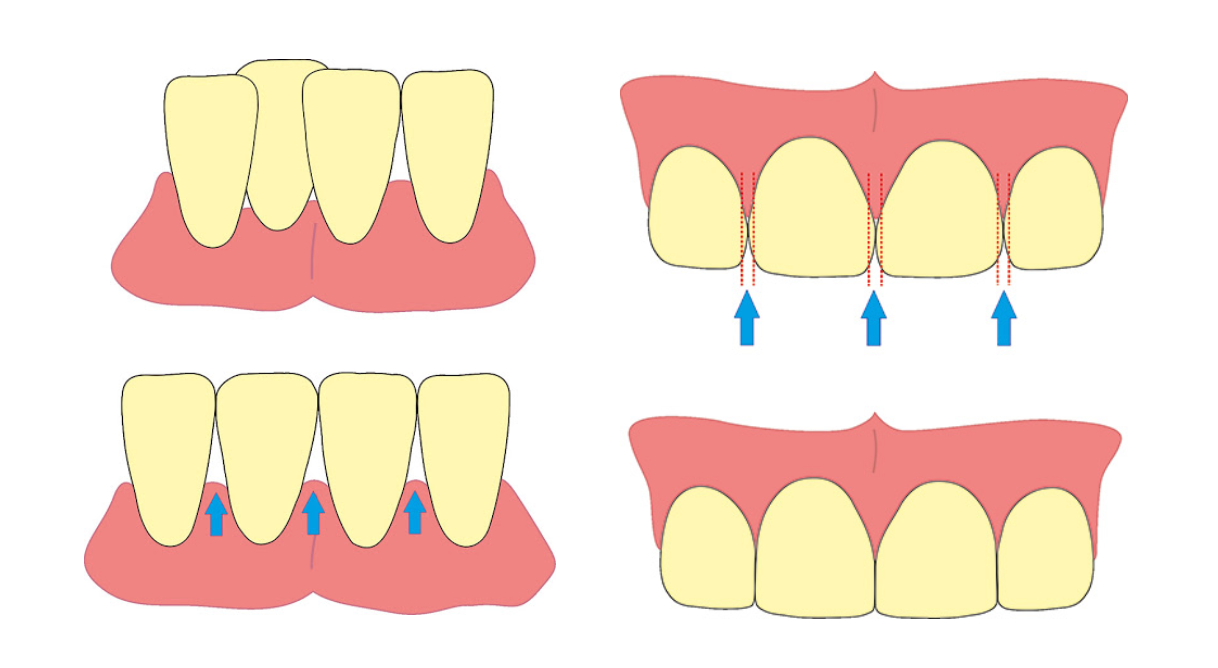Interproximal Reduction (IPR) is an orthodontic procedure gaining prominence in recent years, especially in conjunction with treatments like Invisalign. In this comprehensive guide, we delve into the intricacies of IPR, its necessity in dental treatments, and some frequently asked questions.
What is Interproximal Reduction (IPR)?
Interproximal Reduction, also referred to as tooth slenderization, stripping, or polishing, is a routine orthodontic strategy employed to create space for aligning crowded teeth. Simply put, IPR involves the removal of minute amounts of the outer enamel tooth surface between two adjacent teeth. It’s important to note that the enamel’s removal is minuscule, typically not exceeding 0.5 millimeters per tooth.
The Rationale Behind IPR
In orthodontic treatments, a strategy needs to be in place to create space for dental crowding. The two most straightforward options include the expansion of the dental arches and the pro-clination (or forward movement) of the teeth.
Expansion of Dental Arches
The expansion of the dental arches implies moving the back teeth outwards, thereby creating a wider arch and more space. This can be achieved in two ways:
- Palatal Expander: This approach involves using a palatal expander, moving the jaws in addition to the teeth. However, there is an age limitation for this strategy as it won’t work if the upper (maxillary) suture is fused/calcified.
- Dental Expansion: This is a valid option, but there are limits to this approach as well. The more you move a tooth outwards, the thinner the underlying gum tissue becomes, which can result in gum recession if done excessively.
Proclination of the Teeth
Proclination of the teeth means angling the teeth outwards. There is an optimal angle teeth should have, varying depending on factors like jaw position and tooth shape. Ideally, teeth should be somewhat upright and not angled forward excessively. However, if all the teeth are to remain and space is needed, teeth can angle outwards to fit in.
If both the above-mentioned options have been considered and exhausted, the next approach involves removing tooth structure. In cases where removing a tiny bit of tooth structure will help, IPR is usually the best and most conservative approach.
The Multifaceted Role of IPR
While IPR is one of the most common methods to create space in orthodontics, it also has other purposes. For instance, it’s a solution to help minimize ‘black triangles’. By polishing off a thin amount of enamel on triangular-shaped teeth, it allows the teeth to be pushed together tighter, reducing the triangle in between them. Another use of IPR is to help coordinate upper and lower midlines.
Unraveling Common Queries About IPR
Let’s address some of the most commonly asked questions related to IPR:
How is IPR performed?
At most dental clinics, IPR is performed by hand, using flexible diamond-coated strips worked back and forth between your teeth, much like a fingernail file. In cases where more space is needed, a rotary instrument in a handpiece that oscillates is used.
How much enamel is removed during IPR?
In the grand scheme of things, very little enamel is removed. The most common amount ranges from 0.2 mm to 1 mm between each tooth (this amount is divided between two teeth).
Does IPR hurt?
The simple answer is no. There are no nerve endings in enamel. Hence, anesthesia is not required. However, the feeling of putting a strip or file in between the teeth can create a tight pressure feeling.
Is IPR noticeable?
No! The amount removed is so small that spaces are not evident to an unsuspecting eye. If you examine your teeth up close, you may see a very tiny space, but most patients do not notice any visible change after the procedure.
Is IPR safe?
Research has consistently shown that IPR is a very safe and routine procedure. In the long term, there is no increased risk of cavities, periodontal disease, or tooth sensitivity.
Next Steps: Considering IPR
If you’re having issues with crowding, Interproximal Reduction (IPR) might be a cost-effective approach for you. Always consult with your orthodontist first to be 100% sure.
Conclusion
Interproximal Reduction is a routine procedure often recommended prior to treatments like Invisalign or braces. However, it’s not always the best choice for everyone. For younger patients whose teeth and jaws are still growing, an expansion appliance may be an alternative for increasing spaces between teeth. If more space is needed than can be achieved by IPR, one or more teeth may need to be removed before the treatment can begin. In any case, always consult with your orthodontist for the best treatment plan.

